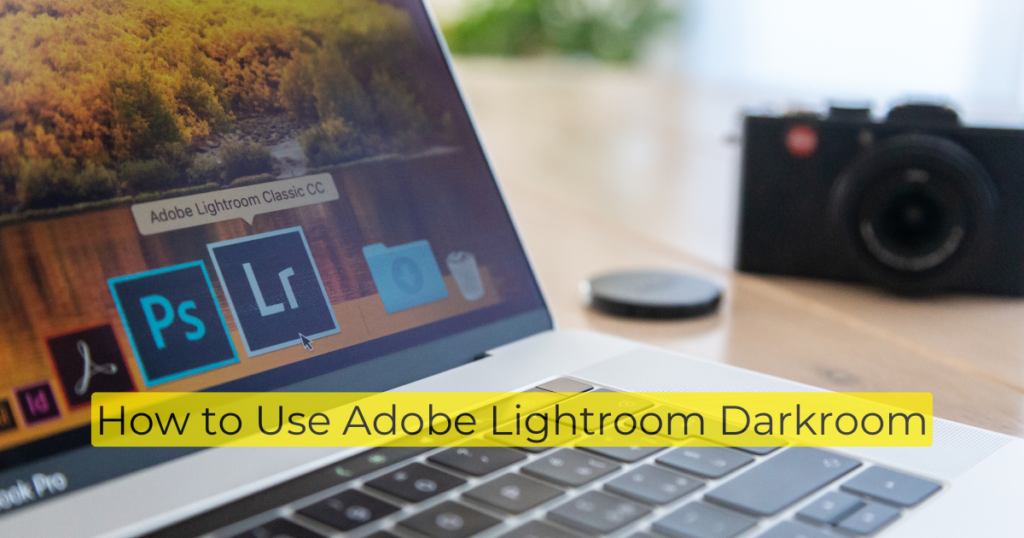Adobe Lightroom Darkroom is a powerful tool designed specifically for photographers who want to enhance their images with ease. It offers a range of editing features that can transform your photos from ordinary to stunning. Whether you’re a beginner or a seasoned pro Lightroom provides a platform to manage and edit your photos effectively.
Importance of Post-Processing in Photography
Post-processing is a crucial step in photography that allows you to correct and enhance your images after they have been shot. It provides the opportunity to adjust exposure, color balance, and sharpness, highlighting the parts of a photo you want to stand out. Many professional photographers often say that a great photo is made in the editing room, not just in-camera.
Differences Between Lightroom and Other Editing Software
While there are numerous photo editing software options available, Lightroom stands out due to its user-friendly interface and non-destructive editing capabilities. Unlike programs that overwrite your original image files, Lightroom allows you to make adjustments while preserving the originals. This is particularly important for those who prefer to keep the integrity of their original shots intact.
Getting Started with Adobe Lightroom Darkroom
Setting Up Your Lightroom Workspace
When you first launch Lightroom, you’ll want to create a workspace that feels comfortable. You can customize panels, arrange your modules, and select which tools are displayed based on your needs. This personalization can make your editing process smoother and more enjoyable.
Importing and Organizing Your Photos
Once your workspace is set, it’s time to import your photos. Lightroom makes this simple: just drag and drop or use the import dialog to select your images. Once imported, consider creating collections and folders to keep similar projects organized. This is where Lightroom shines; you can find what you need quickly, allowing your creativity to flow.
Understanding the User Interface and Tools
The user interface can seem overwhelming at first, but it becomes manageable once you understand the layout. Lightroom is divided into several modules—Library for organization, Develop for editing, and more. Familiarizing yourself with these sections and their specific tools will significantly enhance your editing efficiency.
Essential Editing Techniques in Lightroom Darkroom
Basic Adjustments: Exposure, Contrast, and Color
With your photos organized, you can start making basic adjustments. Use the sliders to tweak exposure, increase contrast, and adjust colors to match your artistic vision. You might find that just a small change in exposure can dramatically enhance a photo.
Advanced Editing: Gradient and Radial Filters
Once you’re comfortable with the basics, you can explore advanced editing techniques. Gradient and radial filters allow for selective adjustments – perfect for emphasizing specific areas of your image without affecting the entire photo. This technique is great for landscapes and portraits alike.
Utilizing Presets and Profiles for Efficiency
Don’t forget about presets! Lightroom comes with several built-in options, and you can create your own. Presets can save you time, especially when you want a consistent look across a series of photos. Imagine having your unique style easily applied with just one click.
Creative Techniques in Lightroom Darkroom
Black and White Conversions
There’s something timeless about black and white photography. Lightroom provides excellent tools for converting color images to black and white, allowing you to focus on tone and texture. Experiment with different filters and settings to find the look that suits your style.
Using Split Toning for Unique Effects
Split toning is a fun way to add color to your highlights and shadows, creating a distinctive mood for your images. It’s especially popular in portrait photography to give a warm feel. Play around with different color combinations, and you might discover a new favorite technique!
Enhancing Textures and Details
If you want your images to pop, consider enhancing textures and details. Use the clarity and texture sliders sparingly to avoid unnatural looking pictures. A little goes a long way, and it can bring out the nuances of your subject beautifully.
Exporting and Sharing Your Edits
Export Settings and File Formats
Once you’re happy with your edits, it’s time to export. Lightroom allows you to choose from various formats like JPEG, TIFF, or PNG. Selecting the right size and quality settings ensures your images look great whether they’re for print or online.
Creating Web Galleries and Slideshows
With your photos edited and exported, consider creating galleries or slideshows. Lightroom offers built-in tools to showcase your work beautifully. This can be a fun way to share your projects with family or friends or even to promote your photography business.
Sharing on Social Media Platforms
Social media is a fantastic avenue for sharing your photography. Lightroom allows you to quickly upload your photos directly to platforms like Instagram or Facebook in just a couple of clicks. Just be sure to optimize your images for web use!
Conclusion
Throughout this guide, we’ve explored the vast capabilities of Adobe Lightroom Darkroom, from getting started to advanced editing techniques. Remember, the key to mastering Lightroom is experimentation. Don’t be afraid to play around and discover what works best for you and your artistic vision.
Frequently Asked Questions (FAQs)
What are the system requirements for Adobe Lightroom?
To run Adobe Lightroom effectively, you should ensure your system meets the minimum requirements, including sufficient RAM, storage, and a compatible operating system. Checking Adobe’s official website for the latest specifications is a good idea.
Can I use Lightroom for video editing?
Yes! While Lightroom is primarily designed for photo editing, it does offer basic video editing tools. You can trim video clips and apply adjustments to color and exposure.
How can I recover lost edits in Lightroom?
If you lose edits, worry not! Lightroom saves your adjustments in a catalog file. As long as you haven’t deleted the catalog, you should be able to recover your edits by going back to the specific photo in your Library.
